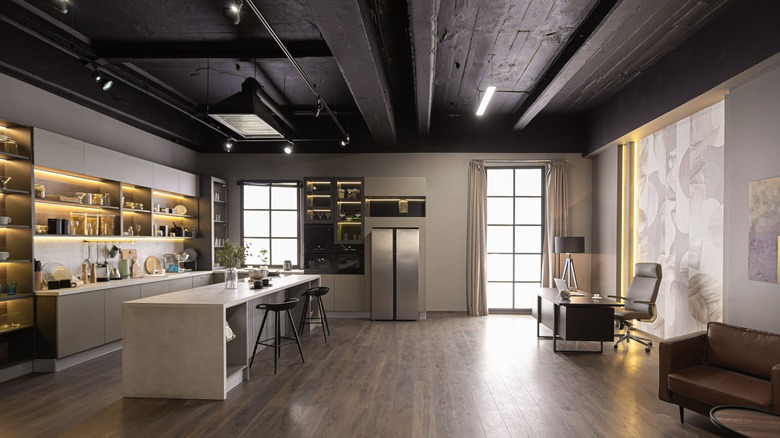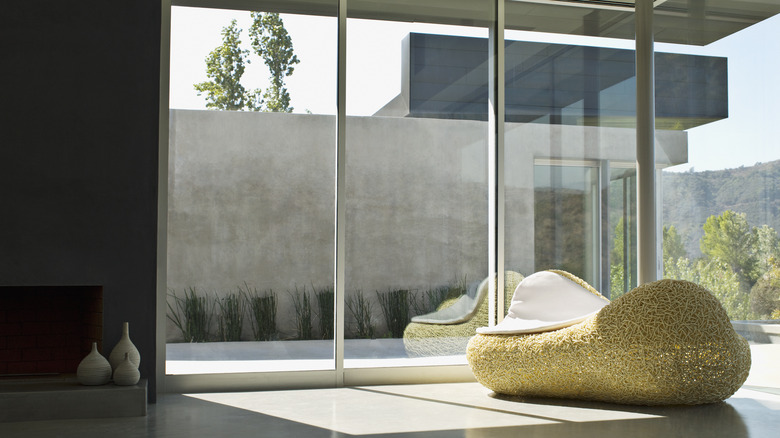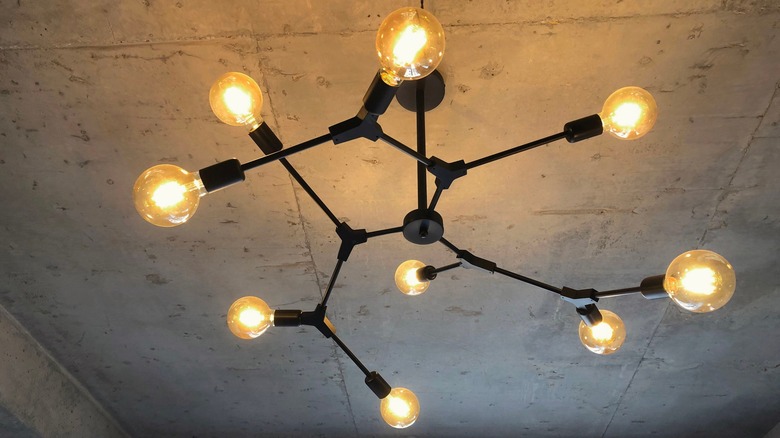Brutalism Is One Of This Year's Hottest Home Trends. Here's How To Nail The Look
No modern architectural style carries as ugly a moniker or elicits as divisive reactions as brutalism. It's often seen as oppressive, and it's no exaggeration to say that many a supervillain lair in media is brutalism-inspired (think the Ministry of Truth in George Orwell's "1984" or Gotham's grim cityscape in "Batman Begins"). One can't help but remember the grueling post–World War II conditions that gave rise to brutalism and wonder if these affiliations contribute to modern minds' difficulty embracing it today.
However, despite brutalism's bad rep, the style that first surged in 1950s–1960s England and fell out of style shortly after hasn't disappeared. Something about its cold, concrete, and grandiose geometric structure has fascinated the eye of modern architects since Le Corbusier. And if trends are to be trusted, it's poised for a comeback, with Zillow noting a 452% increase in for-sale listings mentioning brutalist design last year and calling it a trend to watch for 2024, beating out contenders such as modern farmhouse and coastal contemporary.
Exploring brutalism and its comeback
Personal aesthetics aside, numbers don't lie: Brutalism is back with a vengeance. For those of us wondering what brutalism is and why it's appealing, the term itself reveals much about the architectural style. The eponymous "brutal" from which our style takes its name is about being raw, bold, and imposing. "Brutalism" arose from Le Corbusier's use of "beton brut" – French for "raw concrete." As such, brutalism is characterized by massive raw concrete structures, roughness, geometric complexity, and an imposing spatial experience. Sure, it isn't warm and cozy, but it does make a bold architectural statement and create a canvas for the homeowner's expression and design. In the words of Zillow, "This style's stripped-back interiors act as a blank canvas, making them appealing to minimalists or to creative homeowners who want to furnish them according to their personal style."
This year, many homeowners have embraced minimalism, and are eager to follow Marie Kondo's best advice for decluttering and organizing their home by gravitating to styles like Scandinavian decor for coziness that is organized, natural, and neutral at its core. Brutalism's preference for raw concrete, neutral colors, large open spaces, unique shapes, and sharp geometric lines creates perfect spaces for modernist styles to thrive without feeling cluttered, overwhelming, or outdated. Truthfully, the best brutalist homes don't look like a supervillain lair, they provide a flexible canvas for artistry and warmth.
How to boldly embrace brutalism
Brutalism doesn't have to be abrasive and foreboding. Countless homes that embrace brutalist architecture and interior design have put critics to shame by showing that brutalism is a bold, provocative, and calculated way to create depth, spaciousness, and grandeur without submitting to fleeting or superficial trends. To embrace this style, Le Corbusier's "beton brut" (raw concrete) exteriors, floors, and walls are the way to go for a home renovation or new build. But for easier ways to incorporate this aesthetic, raw materials, exposed elements, and unadorned finishes get to the heart of brutalism's objective.
For walls and flooring, use tones and textures that mimic the feel of exposed concrete. Matte gray interior walls and ditching the shower tiles in favor of plastering the walls for a trendy bathroom are timeless ways to create a brutalist-inspired space along with industrial lighting and wrought iron fixtures. For furniture, use materials like concrete, steel, or unfinished wood to capture brutalism's rugged, geometrically, and texturally unique aesthetic. Finally, abstract paintings, sculptures, and geometric art can make a bold impact and tie the space together. But don't forget to incorporate indoor plants and textures like rugs, tactile upholstery, and throws to make the space feel livable and warm. Brutalism can more than stand up to this juxtaposition and benefit from the contrast. Love it or hate it, an increasing number of homeowners are relishing these elements and infusing their individuality into spaces that epitomize brutalism's core tenets: honesty, functionality, and bare simplicity.


